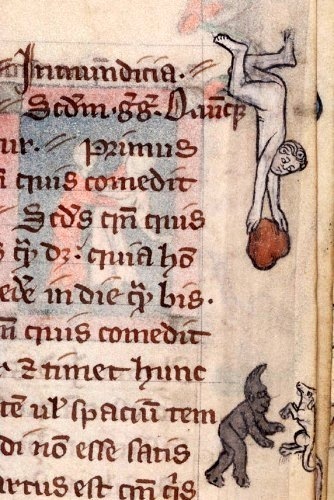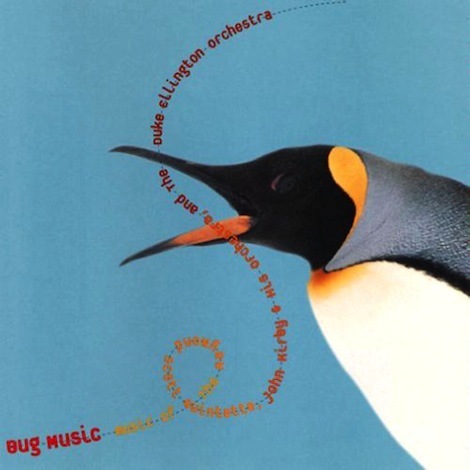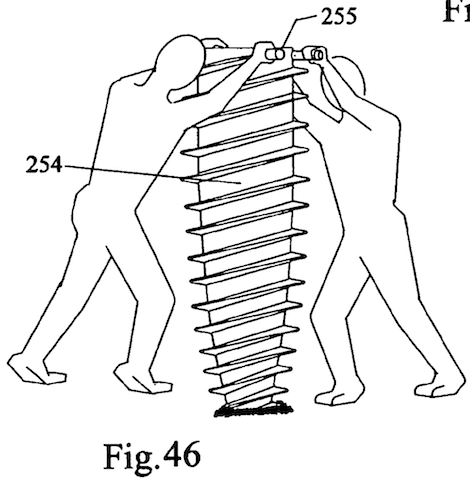Marc Abrahams's Blog, page 534
November 19, 2012
A look back at Thailand’s epidemic of penile amputations
About once per decade, the medical profession takes a careful look back at Thailand‘s plethora of penile amputations.
The first great reckoning appeared in a 1983 issue of the American Journal of Surgery. Surgical Management of an Epidemic of Penile Amputations in Siam, by Kasian Bhanganada and four fellow physicians at Siriraj Hospital in Bangkok, introduces the subject: “It became fashionable in the decade after 1970 for the humiliated Thai wife to wait until her [philandering] husband fell asleep so that she could quickly sever his penis with a kitchen knife. A traditional Thai home is elevated on pilings and the windows are open to allow for ventilation. The area under the house is the home of the family pigs, chickens, and ducks. Thus, it is quite usual that an amputated penis is tossed out of an open window, where it may be captured by a duck….”
So begins this week’s Improbable Research column in The Guardian.

November mini-AIR: Bohr, Bohm, Born Before Born & Grimm
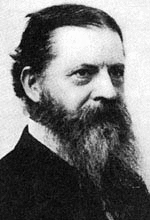 The November issue of mini-AIR just went out. Topics include:
The November issue of mini-AIR just went out. Topics include:
Bohr, Bohm, Born Before Born
Digested Domestic Sludge
Grimm’s Device for Upsetting and Crimping
and more
It also has info about upcoming events (in late Nov, and early Dec).
Mel [pictured here] says, “It’s swell.” (mini-AIR is the simplest way to keep informed about Improbable and Ig Nobel news and events. Just add yourself to the mini-AIR list, and mini-AIR will be emailed to you every month)

He invented a child-replacing robot camel jockey
In this three-minute video, Rashid Ali Ibrahim does some show-and-tell about his “top secret experiments” to develop a robot jockey to replace camel-racing child jockeys. The robots are now in their seventh year of competition on camelback. Children now are banned from taking jobs as camel jockeys in some (but not all) camel-racing countries. — a prize in a film-making competition.

It’s not just chocolate: Foods and Nobel laureates
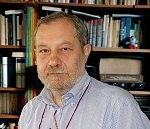 Professor Rodolfo Baggio [pictured here] has built upon Franz Messerli‘s recent research about chocolate consumption and Nobel laureates. We are publishing, here, Baggio’s study [which you are welcome to download as a PDF "Food consumption, cognitive functions and Nobel laureates"]:
Professor Rodolfo Baggio [pictured here] has built upon Franz Messerli‘s recent research about chocolate consumption and Nobel laureates. We are publishing, here, Baggio’s study [which you are welcome to download as a PDF "Food consumption, cognitive functions and Nobel laureates"]:
* * *
Food consumption, cognitive functions and Nobel laureates
by Rodolfo Baggio, Bocconi University, Milan, Italy
A recent paper by Messerli1 suggests that: “Since chocolate consumption could hypothetically improve cognitive function not only in individuals but also in whole populations, I wondered whether there would be a correlation between a country’s level of chocolate consumption and its population’s cognitive function.”
Messerli finds that “Chocolate consumption enhances cognitive function, which is a sine qua non for winning the Nobel Prize, and it closely correlates with the number of Nobel laureates in each country.”
This important result is quite interesting and stimulating, but is in some way limited. I have therefore thought to provide some extensions to the study. Using the same methods and the same data about Nobel laureates per capita in their home countries, I have run correlations with a number of other food and beverages. Data come from the online FAO databases (http://www.faostat.org): The results are in Table 1. Both Pearson correlation and Spearman’s rho coefficients are listed along with their significance values (asterisks significant values: **=significant at 0.001 level, *= significant at 0.05 level).
Table 1: Correlations between Nobel laureates and food & beverages
Pearson Correlation
Spearman’s rho
Nobel laureates vs.
Coeff.
p-value
Coeff.
p-value
Apples
0.234
0.059
0.620
**
0.000
Beer
0.071
0.580
0.488
**
0.000
Butter
0.237
0.056
0.467
**
0.000
Cereals
-0.275
*
0.025
-0.480
**
0.000
Coffee
0.206
0.124
0.655
**
0.000
Eggs
0.025
0.840
0.262
*
0.034
Honey
0.231
0.100
0.340
*
0.014
Lemons
-0.107
0.409
0.160
0.215
Meat
0.360
**
0.003
0.663
**
0.000
Milk
0.261
*
0.036
0.685
**
0.000
Nuts
0.169
0.175
0.437
**
0.000
Onions
-0.266
*
0.035
-0.281
*
0.026
Pasta
0.010
0.953
0.078
0.652
Pepper
0.632
**
0.000
0.313
0.041
Potatoes
-0.034
0.785
0.394
**
0.001
Poultry meat
0.414
**
0.001
0.377
**
0.002
Sugar
0.286
*
0.020
0.515
**
0.000
Tea
-0.079
0.536
0.050
0.697
Tomatoes
-0.157
0.212
0.097
0.442
Wine
0.578
**
0.000
0.698
**
0.000
Not being a physician I do not dare to provide explanations for these results, but I am sure that the readers of this journal will easily find a number of plausible justifications.
Following Messerli’s considerations, however, I can humbly suggest that a dinner composed of a steak au poivre or a chicken au poivre (but with no onions), with a glass of wine and an oven baked apple with butter and sugar could be a powerful enhancer for the cognitive functions of many individuals.
Reference
1 Messerli, F. H. (2012). Chocolate Consumption, Cognitive Function, and Nobel Laureates. New England Journal of Medicine, 367: 1562-1564.
BONUS: “Chocolate Consumption, Traffic Accidents, and Serial Killers,” by James R. Winters and Seán G. Roberts [School of Philosophy, Psychology & Language Sciences, University of Edinburgh]. (Thanks to investigator Martin Reddington for bringing this to our attention.)

November 18, 2012
Ni phrases (It’s not just knights who say…)
If you thought that a ‘Ni phrase’ was simply an example of finely crafted absurdity from the creators of Monty Python – think again. For linguists, Ni-phrases literally span the globe – performing important functions not only in Japanese and Hindi, but also in Russian. Example publication : Ni-Phrases by Klaus Abels (Journal of Slavic Linguistics, Vol. 13, No. 1)

November 17, 2012
Curious naked people in medieval margins: boulder man
This image [below], of a naked man holding a boulder as both hurtle down towards a meeting with what may be a homunculus playing with an airborne dog, puzzles some scholars who study medieval documents. It — and many other unexpected drawings, quite a few of which feature naked people pursuing vigorous activities — populate the margins of a book known as the Rothschild Canticles. The Got Medieval blog writes about it, and about many other curiosities from the same long era. Got Medieval quotes Yale University Press about the Rothschild Canticles:
Produced for a nun at the turn of the fourteenth century, [...the Rothschild Canticles] served as an aid to mystical devotions in which images played as central a role as the written word. Visionary depictions of Paradise, the Song of Songs, the Virgin Mary, the Trinity, and hundreds of other subjects based on texts ranging from the Bible to the Lives of the Desert Fathers together form a devotional program that transports the reader toward contemplative union with God.

A most busy psychological man in San Diego
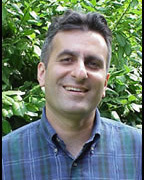 Nader Amir, Ph.D. does it all: panic disorder; missing clinical data; psychopathology; suppression of the emotional Stroop effect; increased anxiety; social phobia; methods of thought control; nosology; memory bias, confidence biases; inflated perception; obsessions, compulsions; inhibition of threat; false memory; spider-fearful individuals — and that’s just in the old days, in the 20th century. In the current century he’s become much busier. Now director of the Center for Understanding and Treating Anxiety, in San Diego, Dr. Amir [pictured here] also has a patent application that he filed in 2008.
Nader Amir, Ph.D. does it all: panic disorder; missing clinical data; psychopathology; suppression of the emotional Stroop effect; increased anxiety; social phobia; methods of thought control; nosology; memory bias, confidence biases; inflated perception; obsessions, compulsions; inhibition of threat; false memory; spider-fearful individuals — and that’s just in the old days, in the 20th century. In the current century he’s become much busier. Now director of the Center for Understanding and Treating Anxiety, in San Diego, Dr. Amir [pictured here] also has a patent application that he filed in 2008.
San Diego State University’s magazine, which is called 360, quotes Dr. Amir as saying “It sounds too simple to be true.”
The Neurobonkers blog writes about the wonders of Dr. Amir:
“Imagine someone patented exposure therapy (one of the basic tools that all psychologists use) and required users of the technique to pay a hefty fee for time limited use. Nader Amir, a researcher from San Diego State University may have done just this to a potentially useful new tool for treating anxiety….”
(Thank to BPS Research Digest for bringing this to our attention.)
BONUS: Dr. Amir showcasing his patients’ anxieties on Fox News, in 2010:

Local warming explained
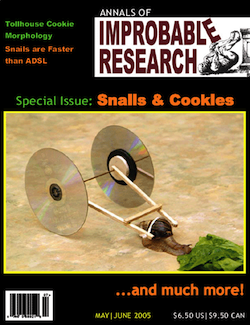 Yossi Vardi, co-author of the study “Sluggish Data Transport is Faster Than ADSL“, which graced the cover and part of the insides of volume 11, number 4 (the special snails & cookies issue) of the Annals of Improbable Research, gave a talk several years later about the dangers of local warming:
Yossi Vardi, co-author of the study “Sluggish Data Transport is Faster Than ADSL“, which graced the cover and part of the insides of volume 11, number 4 (the special snails & cookies issue) of the Annals of Improbable Research, gave a talk several years later about the dangers of local warming:

November 16, 2012
Wild house mouse music
Two studies of wild house mouse music, both from Vienna, the city of music. (The authors are now in various places, though. Possibly so, too, are some of the mice. Co-author Penn is still in Vienna, we believe.)
“Spectrographic analyses reveal signals of individuality and kinship in the ultrasonic courtship vocalizations of wild house mice,” Frauke Hoffmann [pictured here], Kerstin Musolf and Dustin J. Penn. Physiology & Behavior (Volume 105, Issue 3, pp. 766-771).
and
”Ultrasonic courtship vocalizations in wild house mice: spectrographic analyses,” Frauke Hoffmann, Kerstin Musolf and Dustin J. Penn, Journal of Ethology (Volume 30, Number 1, pp. 173-180).
BONUS (unrelated): Bug music

Screw-in coffin: The video
New York based photographer David Friedman has just published a unique video profile of inventor Donald Scruggs – creator of the Easy Inter Burial Container – a.k.a. the Screw-in Coffin (profiled here last year). This is the most recent instalment of Friedman’s Inventors Portrait Project:
Here’s a technical drawing from Mr. Scruggs’s patent:

Marc Abrahams's Blog
- Marc Abrahams's profile
- 14 followers












